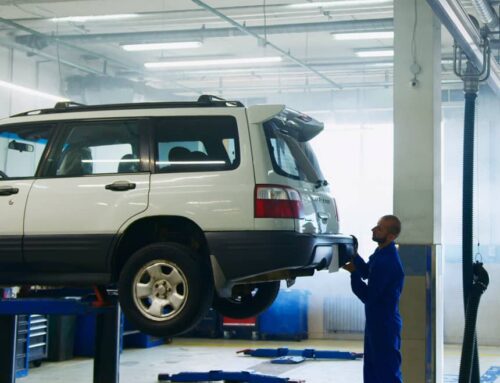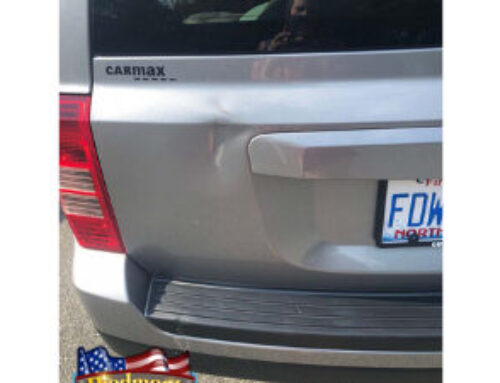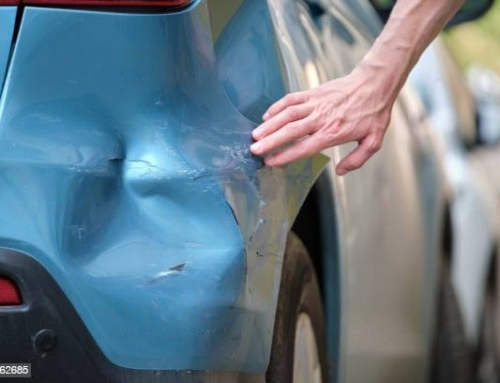Have you heard about the game-changing method that’s sweeping the town? It’s called Paintless Dent Repair (PDR), and let us tell you, it’s becoming the go-to choice for fixing those pesky dents and dings on your beloved vehicles.
So, what’s the buzz all about? Well, imagine saying goodbye to those annoying imperfections caused by hail, rogue balls, or minor fender benders—all without having to repaint or use fillers. That’s the magic of PDR! It’s like giving your car a facelift without the hassle and expense of traditional bodywork.
Car enthusiasts and pros alike in Gastonia are singing PDR’s praises. Why? Because it’s the ultimate solution for restoring vehicles to their former glory without any of the drawbacks of conventional repairs—no more worrying about color mismatches or paint overspray ruining your ride’s sleek look.
How does paintless dent repair preserve a vehicle’s original paint while removing dents?
Paintless dent repair (PDR) is a technique used to remove dents from a vehicle’s exterior without the need for traditional bodywork or painting. This method preserves the vehicle’s original paint finish while effectively repairing the dents. Here’s how paintless dent repair achieves this:
- Accessing the Dent: The first step in paintless dent repair is gaining access. Depending on its location and size, this is typically done by removing panels or accessing the dent from behind. Access points may include openings such as door panels, trunk lids, or wheel wells.
- Assessing the Damage: Once access is gained, the technician carefully assesses the extent and location of the dent. They evaluate factors such as the dent’s size, depth, and location to determine if it is suitable for paintless dent repair.
- Manipulating the Metal: Using specialized tools and techniques, the technician gently massages the metal around the dent, gradually pushing it back into its original shape. This process requires skill, precision, and patience to avoid causing further damage to the paint or surrounding areas.
- Preserving the Paint: Unlike traditional dent repair methods that involve sanding, filling, and repainting, paintless dent repair does not disturb the vehicle’s paint finish. The original paint remains intact, and the metal behind the panel is carefully manipulated, preserving the vehicle’s factory finish.
- Final Inspection: Once the dent has been successfully repaired, the technician conducts a final inspection to ensure that the surface is smooth and the dent is completely removed. Any minor imperfections or residual marks are addressed to achieve a seamless finish.
Overall, paintless dent repair offers a non-invasive and cost-effective solution for removing dents from vehicles while preserving the original paint finish. This technique is ideal for minor dents and hail damage, providing quick and efficient repair without extensive bodywork or repainting.
What types of dents are suitable for paintless dent repair, and are there any limitations to this method?
Paintless dent repair (PDR) is a highly effective technique for repairing certain types of dents, but it has limitations. Here are the types of dents that are generally suitable for paintless dent repair and the limitations of this method:
Suitable Types of Dents for Paintless Dent Repair
- Minor to Medium-Sized Dents: Paintless dent repair is most effective for repairing minor to medium-sized dents, typically those less than a quarter. Hail, minor collisions, or parking lot mishaps usually cause these dents.
- Shallow Dents: Dents that have not caused significant damage to the paint and are relatively shallow are ideal candidates for paintless dent repair. These dents may include door dings, creases, and minor indentations.
- Accessible Dents: Dents easily accessible from behind the panel, such as flat surfaces or areas with openings like door panels, trunk lids, or wheel wells, are well-suited for paintless dent repair. Accessible dents allow technicians to manipulate the metal more effectively without damaging the paint.
- Undamaged Paint: Paintless dent repair is designed to preserve the vehicle’s original paint finish. Therefore, dents that have not caused chipped or cracked paint are ideal candidates for this method.
Limitations of Paintless Dent Repair
- Complex or Deep Dents: Paintless dent repair may not be suitable for dents that are too complex or deep. Dents that have caused extensive stretching or tearing of the metal, particularly those with sharp creases or folds, may require traditional bodywork techniques.
- Restricted Access: Dents located in areas with limited access, such as behind braces, reinforcements, or double-walled panels, may be challenging or impossible to repair using paintless dent repair techniques. Restricted access also limits the technician’s ability to manipulate the metal effectively.
- Damaged Paint: If the dent has caused damage to the paint, such as chipping, cracking, or flaking, paintless dent repair may not be suitable. While minor scratches or scuffs can often be buffed out during the process, significant paint damage may require repainting after the dent is repaired.
- Old or Previously Repaired Dents: Dents that have been previously repaired or have existed for an extended period may have undergone metal fatigue or other changes that make them less responsive to paintless dent repair techniques.
A paintless dent repair in Gastonia,NC is an excellent option for repairing small to medium-sized, shallow dents that have not caused significant damage to the paint. However, it may not be suitable for complex or deep dents, areas with restricted access, or those with damaged paint. It’s essential to consult with a qualified technician to determine if paintless dent repair is the right solution for your specific dent repair needs.
Can paintless dent repair be used for all types of vehicles, including trucks, SUVs, and luxury cars?
Paintless dent repair (PDR) is a versatile technique used to repair dents on various vehicles, including trucks, SUVs, and luxury cars. While the suitability of paintless dent repair may vary depending on the size, location, and severity of the dent, it can generally be applied to most types of vehicles with the right expertise and tools. Here’s how paintless dent repair can be used for different kinds of cars:
- Trucks: Paintless dent repair is commonly used for pickup trucks and larger commercial trucks. Trucks often sustain dents from various sources, such as hail, stray debris, and minor collisions. Paintless dent repair is effective for repairing these dents, especially on flat or accessible panels like truck beds, doors, and fenders.
- SUVs: SUVs (sport utility vehicles) are another type of vehicle that can benefit from paintless dent repair. SUVs are prone to dents and dings, particularly on larger panels, such as doors, hoods, and rear liftgates. Paintless dent repair can address these dents, restoring the vehicle’s appearance without extensive bodywork or repainting.
- Luxury Cars: Luxury cars often feature complex body designs and high-end paint finishes that require careful attention during dent repair. Paintless dent repair is well-suited for luxury cars, as it preserves the original paint finish and maintains the vehicle’s value and aesthetic appeal. Skilled technicians can use paintless dent repair techniques to address dents on luxury cars’ panels, including doors, fenders, hoods, and trunks.
While paintless dent repair can be used on most types of vehicles, factors such as the dent’s size, location, and severity must be considered when determining its suitability for this method. Additionally, the expertise and experience of the technician performing the repair play a significant role in achieving optimal results.
Paintless dent repair offers a cost-effective, efficient, and noninvasive solution for repairing dents on various vehicles, including trucks, SUVs, and luxury cars. By preserving the original paint finish and restoring the vehicle’s appearance, paintless dent repair helps vehicle owners maintain their investment and enjoy their cars for years.
Are there any specific qualifications or certifications a technician should have to perform paintless dent repair effectively?
To perform paintless dent repair (PDR) effectively, technicians can pursue various qualifications and certifications demonstrating their proficiency in this specialized skill set. While there may not be an official government-issued certification, the following qualifications and certifications are recognized within the PDR industry:
- Paintless Dent Repair Certification: Some training academies and organizations offer comprehensive certification programs that cover the repair of various types of dents, including hail damage, door dings, and creased dents. These certifications often involve hands-on evaluations of actual PDR techniques on steel and aluminum panels.
- Vale Certifications: Vale Training offers professional certifications that designate recipients as having excelled in highly specialized hands-on testing of paintless dent repair. The National Association of Paintless Dent Repair Technicians endorses this certification.
- I-CAR Courses: I-CAR provides online self-study courses designed explicitly for paintless dent repair technicians. Completing these courses can provide valuable insight and knowledge for performing effective PDR.
- Industry-Specific Training Programs: Various PDR training schools and academies offer courses that thoroughly cover repairs for different types of dents, showcasing the technician’s expertise in the field.
While some sources mention that no official certification makes someone an “official” PDR technician, obtaining relevant qualifications and certifications demonstrates a commitment to professional development and proficiency in the craft.





